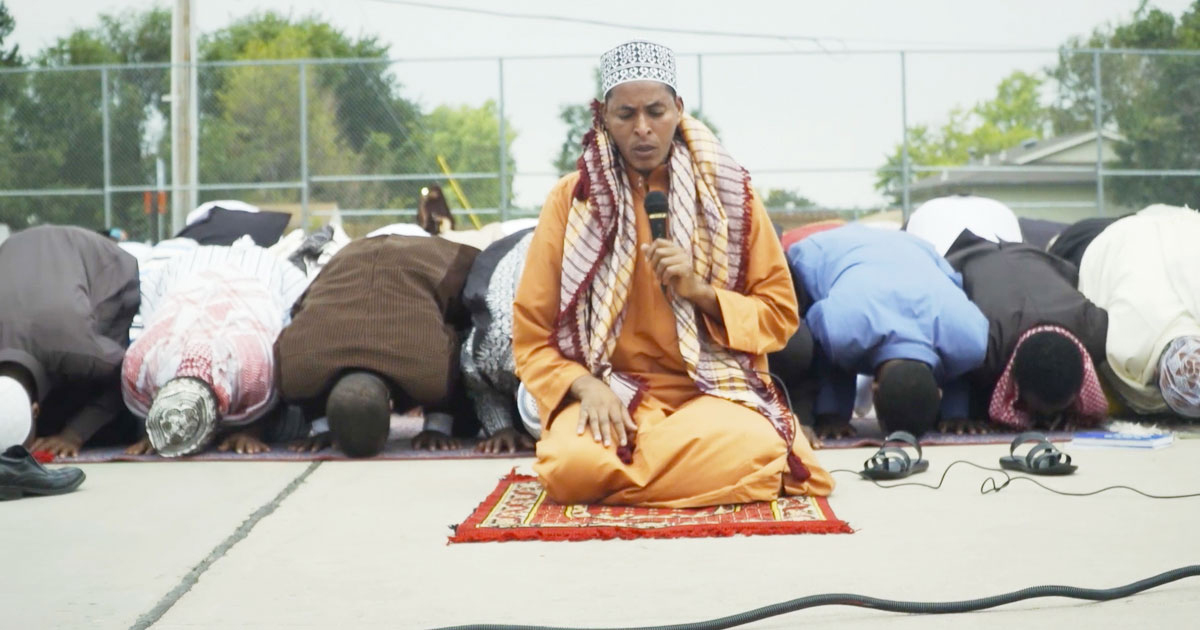'Garden City' film shows what makes pluralism work, what threatens it

LAWRENCE – Garden City is something of a misnomer, sitting as it does on the parched high plains of southwest Kansas. But as the title of the new documentary by Robert Hurst, “Garden City, Kansas” serves as a metaphor.
“Garden City is a metaphor for ... a common goal. That's what pluralism is,” said Hurst, associate professor of film & media studies at the University of Kansas. “You have differences, but you find commonalities to work toward. And if somebody has a different religion or a different diet, it's not a threat to you.”
A fine sentiment. But it was a threat to that way of life — a conspiracy by a handful of would-be domestic terrorists to attack and kill Somali immigrants — that set Hurst’s film in motion, and it’s an inextricable part of an otherwise upbeat film, said the director.
When news broke that the plot by an offshoot of a so-called “Three Percenter” militia group had been thwarted by federal law enforcement agents in October 2016, Hurst started sniffing around the story.
“There have been other stories, smaller films, made about Garden City, but none of them really had a national reach,” Hurst said. “So there were a lot of elements we took into consideration before we decided that we had something.
“Garden City is kind of unique as far as its size, its relative isolation and that it's a majority minority ... non-European-descent community,” Hurst said of the city of 25,000. “There are Mexicans and Somalis and their descendants from the Horn of Africa, Eritreans, Sudanese, people from Burma, Thailand, Vietnam. And then, you know, Central America, El Salvador, Honduras, Guatemala and people from Cameroon. We met people from Haiti, from Cuba, from the subcontinent of India and Europeans, too.”
The attraction for all the immigrants — including some from other parts of Kansas — is the Tyson beef-packing plant that employs about 4,500 people. Hurst toured it and found some archival footage of inside to show the grueling work done by the almost exclusively immigrant workforce.
And yet some, like the Three Percenters, resent the immigrants, going so far — long before the bomb plot — as to spy on them in hopes of ferreting out some nefarious deeds like drug dealing or human trafficking.
“It's sort of like they want to attract people but then reserve the right to belittle them and mock their religions and suspect them for not being the same,” Hurst said.
And while the explication of the bomb plot takes up only a minority of the film, Hurst said it was necessary for the film’s dramatic arc.
At its heart, he said, the film is about what it takes to make pluralism work and what it takes to keep communities alive.
“It's about the dynamic of immigration and how it's not perfect,” Hurst said. “How do the people who are already there treat the people who are arriving in the city? What does it take to make their own lives work? To make the city work?”
Hurst said COVID-19 lockdowns threw a monkey wrench into the film’s development. But now it’s hitting the film festival circuit, starting with the Kansas City FilmFest International on March 29 and including Lawrence’s Free State Festival in June-July. See here for KC FilmFest tickets and other details.
“We were a little concerned that its relevance would fade if we got too far away from the event, but that doesn't seem to be the case,” Hurst said. “Unfortunately I think it's still really relevant. Three of the conspirators were deeply into alternative news sources and alternative facts and conspiracy theories. And that's sort of mainstream at this point.”
Image: Muslim immigrants in Garden City hold a prayer service on an outdoor basketball court to celebrate Eid al-Adha, marking the end of Ramadan, in 2017 Credit: Courtesy Robert Hurst